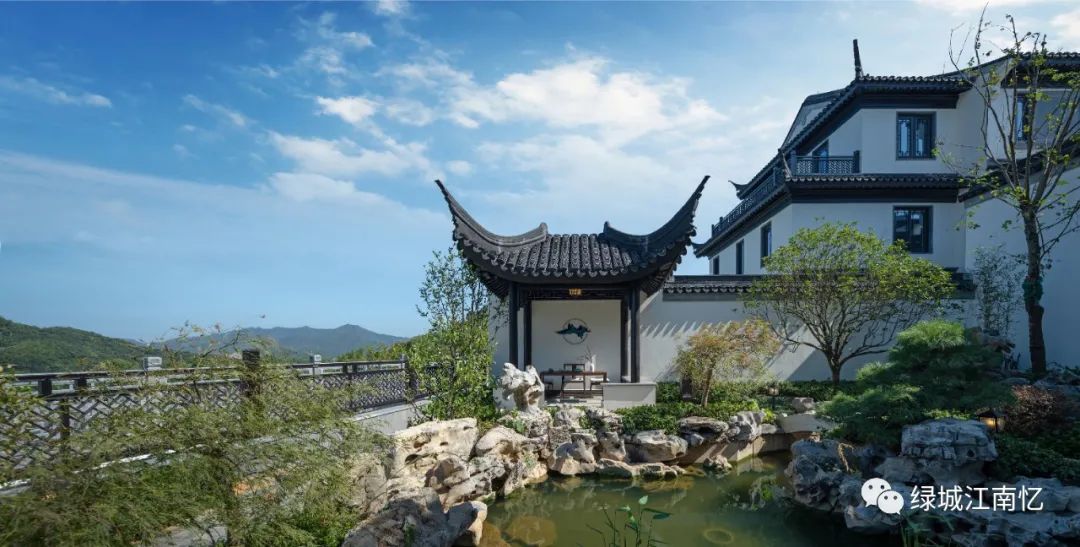In the era of Zheng Kai in the same city, this cornice ushered in its rebirth in the old land of the Northern Song Dynasty.
It is known as one of the classic symbols of traditional Chinese architecture.
Cornice refers to the corner of the roof of traditional Chinese buildings.
A touch of Chinese elegance with cornices flowing for thousands of years.
Japanese scholar Kato said on Monday that the Dougong and cornice were born gracefully against the bright autumn sun.
Under the cornice of the big house, the kind of quiet and leisurely life has provoked many people’s infinite longing.
More confident humanistic expression and freer spiritual temperament are the foundation for running to the future.
If you look from a distance, you can find that it is these cornices and arches that have become the “finishing touch” of the city.

The poet said, “little eaves fly in every day.”.
This style and feelings are often materialized into cornices.
From architectural form to brick and tile, they all talk about the inherent character and feelings of architecture.
They are a quiet and far-reaching watch.

As a landmark architectural symbol, cornices were “born” on the roof of buildings in the Song Dynasty (in the language of “building French style”), and the eaves of the corners were tilted upward, which not only increased the daylighting, but also increased the upward movement of the buildings, making the original heavy buildings light but not frivolous, dignified but not rigid, and the lingering charm is long in the years.
A spiritual dialogue between the ancient and the present resonates with the times in the green city · recalling the south of the Yangtze River.
The slightly rising radian of the corners gave people a sense of dilution and softness, and appropriately expressed the essence of Chinese culture.

The echo of the times, the national style and elegant charm of aesthetics on the eaves, the tide of the times, rolling forward, and the cornice always lingers in people’s mind.
An increase of 1% is too warped, and a decrease of 1% is peaceful, which supports a far-reaching sky for people living under this roof.
The “cornice and anti house” of Gaoyang King Temple recorded in Luoyang Jialan Ji is an example.

For thousands of years, cornices show the flexible beauty of “eaves”.

They are consistent with nature and time.
Since the book of songs “like birds flying like birds”, the changes of eaves and corners reflect the development of Chinese Architecture: the two-stage roof in the Qin and Han Dynasties determines that the eaves are straight without warping; The folding roof in the northern and Southern Dynasties made it possible for the corners to tilt up.
Through a special treatment and creation, it tilts up and out and flies up, like a bird spreading its wings, light and lively.
Green city · recalling Jiangnan believes that only with a rigorous attitude can we better show the aesthetics of song style.
Of course, the success of cornices will wait until the Song Dynasty.
Yes, the slightly warped cornice, combined with the elastic eaves curve, slightly inverted roof and Dawa white wall, has formed a strong visual effect and artistic appeal, and also achieved the lasting charm of Chinese architecture.
It is not only the return of swallows, but also the symbol of home.
After the development of the Sui and Tang Dynasties, the corner beams of the eaves in the Song Dynasty were continuously lengthened, and the corner rafters were also lengthened.
Chinese traditional architecture always contains ritual order and regulation.
If we talk about the embryonic form of Qiaoqi in the Wei and Jin Dynasties, Qiaoqi was first seen in the Sui and Tang Dynasties and matured in the Northern Song Dynasty.
The change of eaves and corners reflects the development process of Chinese architecture.
Under the cornice of a corner of the green city recalling the south of the Yangtze River, with the blood gene of architectural aesthetics in the Song Dynasty, let history and the future intertwined, and reshape a more free and confident national style for the city and people living here…
After repeated research, derivation and modification, the eaves and corners rise lightly with a specific radian.
In order to restore the simplicity and simplicity of the Song Feng architecture, grecheng, a famous Chinese designer Jiang Yu, who combines the Chinese architectural design of the millennium, combines the beauty of the Millennium architecture in China, fully draws the architectural essence of the Song Dynasty, and outlines the landscape texture of the city with the art of cornice, so that aesthetics on the eaves of the millennium has renewed its new interest.




